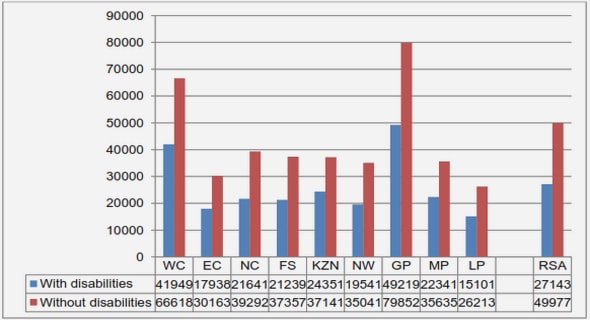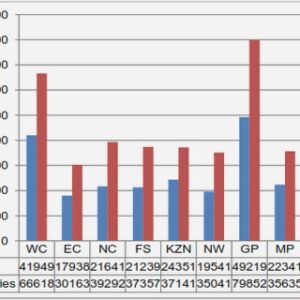(Downloads - 0)
For more info about our services contact : help@bestpfe.com
Table of contents
I. ABSTRACTS
I.1. Summary
I.1.1. Keywords
I.2. Résumé
I.2.1. Mots-clés
II. PHYSIOLOGIC CONTROL OF FOOD INTAKE BEHAVIOR
II.1. Introduction
II.2. ‘Regulation’ or ‘Control’ of food intake?
II.2.1. Regulation
II.2.2. Control
II.2.3. Regulation versus Control
II.3. Energy homeostasis
II.4. CNS Centers of food intake control
II.4.1. The hypothalamus
II.4.2. Extra-hypothalamic regions
II.5. Peripheral regulation signals
II.5.1. Short and long-term signals
II.5.2. Digestive signals
II.5.3. Hormonal signals
II.6. Food intake behavior
II.6.1. Periodicity of food intake
II.6.2. Episodicity of food intake
II.7. Food reward
II.8. Unspecific hedonic phenomena
II.8.1. Hunger
II.8.2. Satiation
II.8.3. Satiety
II.8.4. The satiety cascade
II.9. Specific phenomena
II.9.1. Specific hungers & specific appetites
II.9.2. PICA
II.9.3. Conditioned satiety (CS)
II.9.4. Alimentary alliesthesia (AA)
II.9.5. Sensory-specific satiety (SSS)
II.10. Integration of signals
II.11. Environmental and behavioral factors
II.11.1. Social, cultural and environmental factors
II.11.2. Psycho-affective factors
II.11.3. Cognitive factors
II.12. Availability and Composition of Food
II.12.1. Food availability
II.12.2. Food palatability or the ‘appetizer effect’
II.12.3. Sensory Variety and Monotony
II.12.4. Macronutrient composition
II.12.5. Aggregate state of foods
II.12.6. Organoleptic properties of food
II.12.7. Physical aggressions
III. SENSORY PLEASURE: HISTORICAL ASPECTS OF HEDONICS
III.1. Ancient Greece
III.2. Modern Times
IV. MEASUREMENT AND QUANTIFICATION OF REWARD
IV.1. Measuring in Humans
IV.1.1. Questionnaires
IV.1.2. Rating scales
IV.2. Measuring in Animals
IV.2.1. Visualization and frequency of specific behaviors
IV.3. Other Measurement techniques for Animals and Humans
IV.3.1. Quantitative Measurement
IV.3.2. Choice behavior – Motivational Conflict
IV.3.3. Behaviorism and Reward
IV.3.4. Facial mimics in newborns
IV.3.5. Brain stimulation reward
V. ALIMENTARY ALLIESTHESIA
V.1. Definition and Terminology
V.2. Sensory modalities of alliesthesia
V.2.1. Thermal alliesthesia and Alliesthesia for water
V.2.2. Olfactory and gustatory alliesthesia
V.2.3. Visual and auditory alliesthesia – Environmental alliesthesia
V.2.4. Alliesthesia for sexual cues
V.3. Origin of Alliesthesia
V.4. Mechanism(s) of Alimentary Alliesthesia
V.5. Internal signal implicated in Alimentary Alliesthesia
V.5.1. Hepatic receptors
V.5.2. Intestinal receptors
V.6. Specificity of Alimentary Alliesthesia
V.6.1. Olfactory alliesthesia
V.6.2. Gustatory alliesthesia for primary sense
V.6.3. ‘Flavor alliesthesia’?
V.7. Time-course and Intensity
V.8. Influencing factors
V.8.1. Food-related factors
V.8.2. Intrinsic and environmental factors
V.8.3. Modulation by drugs manipulating reward-circuits
V.9. Behavioral equivalent in animals
V.9.1. Fish
V.9.2. Rats
V.10. Innate or acquired?
V.11. Functions and finality
V.11.1. The ponderostat
V.11.2. The function of alimentary alliesthesia
VI. SENSORY-SPECIFIC SATIETY (SSS)
VI.1. Definition
VI.2. Standard test procedure
VI.3. Historical aspects
VI.4. Sensory modalities
VI.4.1. Flavor-specific satiety
VI.4.2. Olfactory and taste sensory-specific satiety
VI.4.3. Texture-specific satiety
VI.4.4. Appearance-specific satiety
VI.4.5. Motivation-specific satiety
VI.5. Mechanism
VI.5.1. Intensity perception: adaptation and habituation
VI.5.2. Sensory vs. postabsorptive effects
VI.6. CNS mechanisms
VI.6.1. CNS studies in non-human primates
VI.6.2. CNS studies in humans
VI.6.3. Brain systems mediating Liking & Wanting
VI.7. Temporal pattern and duration
VI.7.1. Short-term SSS
VI.7.2. Long-term SSS
VI.8. Influencing factors
VI.8.1. Weight & Volume
VI.8.2. Caloric content
VI.8.3. Macronutrients
VI.8.4. Variety and Monotony
VI.8.5. Aggregate state of foods
VI.8.6. Preference
VI.8.7. Information on nutrient composition
VI.8.8. Dietary restraint and obesity
VI.8.9. Alcohol
VI.8.10. Age
VI.8.11. Eating disorders & pathologies
VI.8.12. Innate versus acquired
VI.8.13. SSS in rodents
VI.9. Purpose and functions
VI.9.1. Meal termination
VI.9.2. Variety searching
VI.10. SSS and the other hedonic phenomena
VI.10.1. SSS versus alimentary alliesthesia
VI.10.2. SSS versus conditioned satiety
VII. EXPERIMENTAL SECTION
VII.1. First study: Seasoning
VII.1.1. Introduction
VII.1.2. Article
VII.1.3. Main results & Discussion
VII.2. Second study: BMI
VII.2.1. Introduction
VII.2.2. Article
VII.2.3. Main results & Discussion
VII.3. Third study: Monotony & Variety
VII.3.1. Introduction
VII.3.2. Article
VII.3.3. Main results & Discussion
VII.4. Fourth study: Dishabituation
VII.4.1. Introduction
VII.4.2. Article
VII.4.3. Main results & Discussion
VIII. GENERAL CONCLUSIONS ON EXPERIMENTS
VIII.1. Conclusions of Study 1
VIII.2. Conclusions of Study 2
VIII.3. Conclusions of Study 3
VIII.4. Conclusions of Study 4
IX. GENERAL DISCUSSION
X. SUGGESTIONS FOR FUTURE STUDIES
XI. REFERENCES
XI.1. Chapter Physiological Control
XI.2. Chapter Sensory Pleasure
XI.3. Chapter Measurement
XI.4. Chapter Alliesthesia
XI.5. Chapter Sensory-specific satiety
XI.6. Chapter Experiments
XII. ANNEX – ORIGINAL PUBLICATIONS
XII.1. Does modification of olfacto-gustatory stimulation diminish sensory-specific satiety in humans?
XII.2. Sensory-specific satiety with simple foods in humans: no influence of BMI?
XII.3. Variety enhances food intake in humans: role of sensory-specific satiety
XII.4. Alternation between foods within a meal. Influence on satiation and consumption in humans


